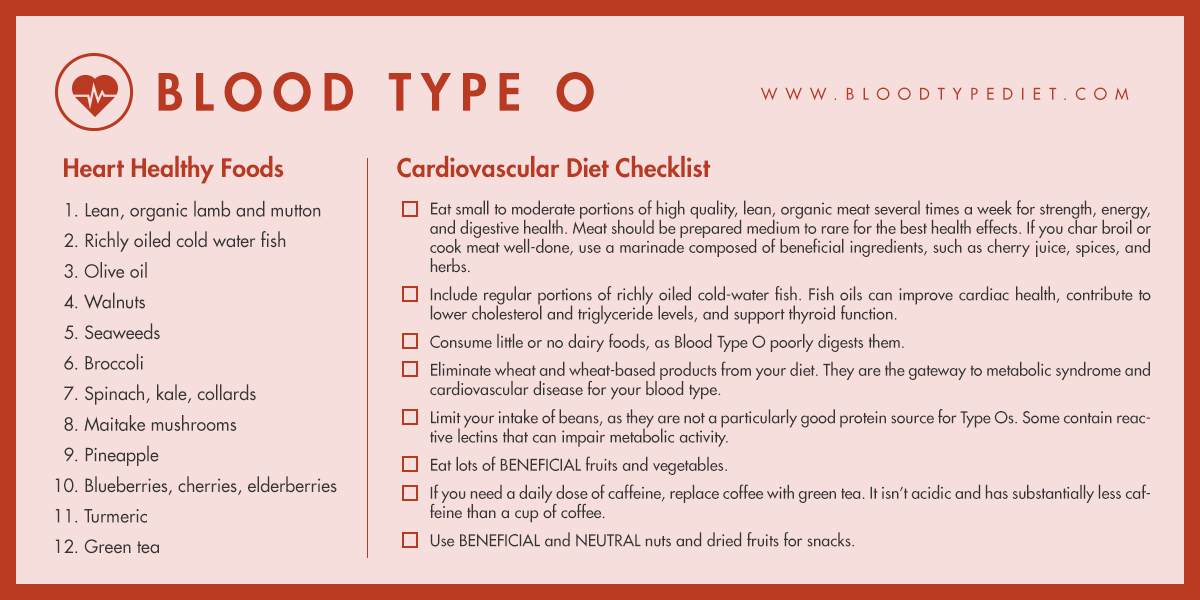

In 2019, there were around 10.85 million blood transfusions in the United States. There are many reasons why a patient may need a blood transfusion, including surgery, cancer treatment, severe injury, or chronic illness. population has this blood type.īlood transfusion is a routine procedure that involves adding donated blood to a patient’s body. Blood type O people have a tendency to accumulate extra fat around the. The Blood Type O Diet eliminates carbohydrates that turn into sugar quickly, like breads, white rice, and pasta. The reduction in risk appeared to be about 9 to 18 percent for people with an O blood type compared with other blood types, among which there was little difference in susceptibility. Diet plan for type o positive blood is mostly a low-carb diet and teaches you to avoid high Glycemic Index foods, which can cause spikes in your blood sugar.

However, only about seven percent of the U.S. People with the O blood type (whether O positive or O negative) had a lower incidence of COVID-19 positive tests. Therefore, this blood type is the most requested by hospitals. Those with blood type O-negative are universal blood donors, meaning their blood can be transfused for any blood type. donated blood, with around 2.2 million of these people donating for the first time. It was estimated that in 2019, around 7.3 million people in the U.S. The American Red Cross estimates that every two seconds someone in the United States needs blood or platelets, highlighting the importance of blood donation. However, blood type O-positive is more common in Latino-Americans than other ethnicities, with around 53 percent of Latino-Americans with this blood type, compared to 47 percent of African Americans and 37 percent of Caucasians. The most common blood type in the United States is O-positive, with around 38 percent of the population having this type of blood. Latz CA et al.The eight main blood types are A+, A-, B+, B-, O+, O-, AB+, and AB. The findings, say the researchers, need to be further explored to determine whether there is something inherent in blood types B, AB, and O that potentially induces risk or confers protection in individuals. The retrospective review showed no significant connection between blood type and worsening of the disease or blood type and the need for hospitalization, positioning requirements for patients during intubation, or any inflammatory markers. The researchers drew upon the Mass General Brigham Research Patient Data Registry to assemble a study population of 1,289 symptomatic adult patients whose blood type had been recorded and who had tested positive for COVID-19. Some have suggested there may be a link between the disease and blood type. This means that any patient with any of the 8 blood types can receive O- to help through treatments or trauma accidents. The COVID-19 pandemic has spurred research to find characteristics that render individuals more susceptible to the virus, as well as risk factors that intensify its severity and progression. Symptomatic people with blood type O are less likely to test positive. According to D’Adamo, those with type O blood should focus on eating lots of protein, like one would in a paleo or low-carbohydrate diet.

Although the findings dispel previous reports suggesting that a certain ABO blood type could lead to increased disease severity, they did indicate that symptomatic individuals with blood types B and AB who are Rh+ are more likely to test positive for COVID-19 than people with other blood types. Harvard COVID-19 Information: Keep Harvard Healthyīlood type is not associated with a severe worsening of symptoms in people who have tested positive for COVID-19, according to HMS researchers at Massachusetts General Hospital.Celebrating 50 Years of Diversity and Inclusion.Research Departments, Centers, Initiatives and more.


 0 kommentar(er)
0 kommentar(er)
